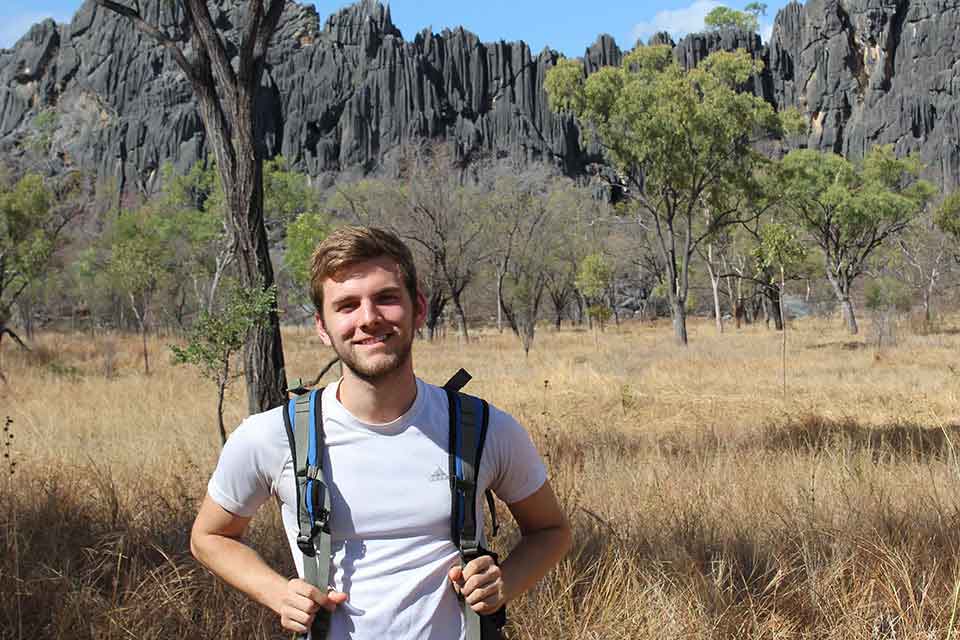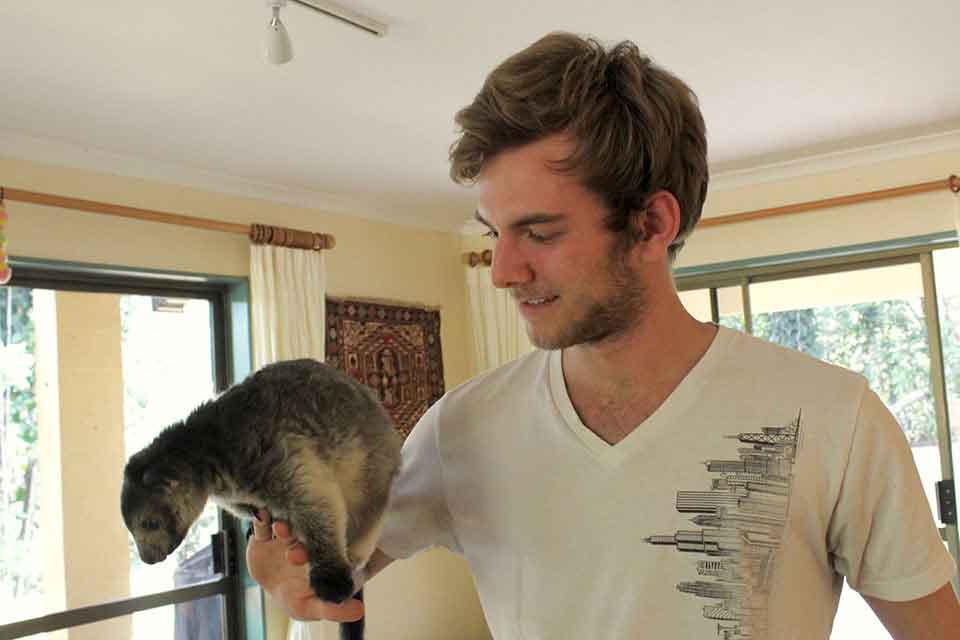Profile: Matt Smetana '17

Major: Environmental Studies
Year Abroad and Program: Fall 2016, SFS/ Australia: Rainforest Biodiversity
Reason for choosing program: I wanted to find a program that would give me an in-depth look into the ecology and environmental problems facing my host region. It was also very important to be surrounded by other passionate people excited to learn and explore together.
Favorite classes: Being extremely interested in wildlife biology, my favorite class was definitely Rainforest Ecology. We were able to learn about our animal and plant neighbors and go on field trips to explore the wealth and diversity of Australian wildlife firsthand. That being said, I also thoroughly enjoyed the Directed Research course. We designed our own research projects, collected data in the field for several weeks, and synthesized a proper scientific report. I did my research on habitat use of a restoration corridor by the Lumholtz's Tree Kangaroo using indirect survey techniques. Your mentor helps guide you through the process and you end up feeling very accomplished with the final result!
Housing situation: For those who do not know about the program, you live and learn in the middle of the rainforest for three months. You have some excursions to towns and small cities, but the focus is really on getting to know your new rainforest home. The main center (where you spend most of your time) is basically a single building complex which has a classroom and lounge, lab, library, kitchen, dining, and recreation areas. The cabins are about a 5-minute walk from the center
Waking up in the rainforest every morning and hearing the sounds of the various creatures before bed is something truly remarkable. You spend most of your time with the ~16 other people in the program and get to know them really well; if you want a great bonding experience, spending 3 months in the rainforest with another person will do the trick!
Best memory: While I have so many incredible memories from the program and from post-program travels to Sydney and New Zealand, I think my favorite memory was counting cranes by Lake Tinaroo. It was one of the first days of the program and our senses were still overloaded from switching our lives so drastically. One night after class we drove out to nearby Lake Tinaroo to count cranes as they traveled on their migratory path south for the summer. A small group of us were stationed with some locals volunteering for the evening.
I learned about one man researching a parrot thought to be extinct for 80 years before he re-discovered the species several years ago. Ever since he had been studying their ecology and behavior patterns. We set up the scope and I was handed a set of data sheets, then the mayhem began. Several people started calling out their sightings of cranes and directions of travel, I was almost unable to keep up. There were periodic lulls in the commotion and I was able to learn more about my professor's interests and habit for dancing like a crane — it was an incredibly amusing night. This experience helped me realize how enjoyable ecological data collection can be and that I am making the right decision in career path.
Greatest challenge: The greatest challenge while being on the program was not having continuous access to high-speed wifi. Being in the rainforest, the internet connection is physically more-limited than in an urban environment. While it was difficult not staying in communication with folks or trying to find materials quickly, you do get used to not being as connected and actually embrace it in the end.
What you know now that you didn't before? I now know that I will live and work in a rainforest later in life. The sheer amount of biodiversity in a rainforest greatly exceeds that of nearly every other biome and the animals and plants are highly specialized to the conditions found in such a moist environment. I also have started considering working abroad after living and gaining experience internationally.
Fact about country people would be surprised to learn: About 87% of mammal, 93% of reptile, and 94% of frog species in Australia are found nowhere else on Earth (due to Australia's early separation from Gondwana). Australia is also the place on earth hosting the highest extinction rate. Since European colonization, 30 endemic mammal species have gone extinct. Environmental policies are very weak and favor expansion of ranching and destructive agricultural ventures.

“Waking up in the rain forest every morning and hearing the sounds of the various creatures before bed is something truly remarkable.”
Matt Smetana '17